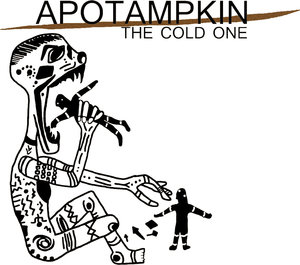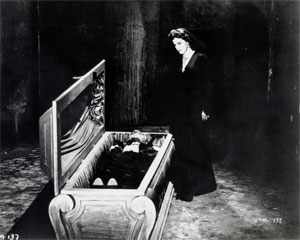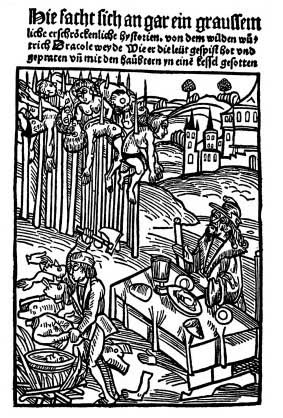VAMPIRE MYTHOLOGY
How many of you have googled "vampire" as Bella did after seying Twilight and hoped to see the same websites or at least some of the information presented there? We decided to make a little search of our own about the vampire mythology and the myths around the subject and we present to you some of the most important foundings that actually relate to what was presented in the movie.
You will find here myths and legends, documented vampire cases, list of creatures that have the same descriptive as the vampire for almost every country around the world, and much more, but most imortantly, you will find unwritten popular legends from Romania and the true historical facts that generated the Dracula Myth.
And we will start with the first myth preseted in Twilight about ancient creatures
APOTAMKIN
The Apotamkin is a bogeyman creature in Native American mythology. One interpretation of Apotamkin is that it is a myth used to instill fear into children from venturing into areas alone and without parental guidance.The Apotamkin is sometimes considered to be a Native American version of a vampire. There are not different kinds of the Apotamkin around the world.APOTAMKIN: Native American vampire creature. He's a hairy blighter with long fangs and loves the taste of freshly clobbered children. The only defence is to be several miles away. Spread the word

Romanian Myths
In the myths about vampies in Romania, as most of the myths about blood drinkers around the world, were not named vampires. In Romania they were cold strigoi, varcolaci or moroi. A well know tradition to funerals in Romania is based on the existence of those creatures and in some parts of Romania, the tradition is still very much alive and respected and passed on by the elders alog with the teryfing stories. The funeral custom we talked about starts with the way a human becomes a moroi. It is said that The table in which the dead man lies for three days before the funeral must be guarded at all times because if a cat or a dog passes under that table in that three days time to mourne the dead before the funeral, then the dead one will rise as a moroi and first come for their loved ones. It is said that thay can only be seen or heard during the night and they come and call the names of the loved ones that they want to take with them to the grave.

They say that if a moroi calls your name you should not turn to face them, because if you try to look at them, you will also die, the moroi will take you with him.
A country "flawlessly" linked with vampires on movies and novels. No wonder Bram Stoker's Dracula began and ended in Transylvania. It is where Bram located Castle Dracula, based on knowledge of Transylvania that he acquired from Emily Gerard's 1800 classic, "The Land Beyond the Forest".Stoker's Dracula was named after Vlad the Impaler, prince of Wallachia in the fifteenth century which is part of modern Romania found south of Carpathian Mountains. Vlad was considered a vampire, a real vampiric killer. Though it was never written in history that Vlad did drank blood, his cruelty and lust for killing people (by impaling) could have been the reason for labeling him as a real life vampire. His favorite punishment was impaling and history says that he enjoyed watching blood spilling out of an impaled person's body.

The Romanian Concept of a vampire is very similar with that of the Slavs... Being geographically linked, such similarity of cultural and superstitious beliefs is out of the question. Though similar, there were some distinctions on the Romanian Concept of a vampire compared to that of the Slavic vampire.
There were two types of Vampires based on the Romanian history of vampires.. One is strigoi mort, a "dead vampire", which were humans when alive who became vampires after death. Strigoi vii on the other hand is a "live vampire", usually believed as a child of an illegitimate couple. They were witches who can send their souls (or bodies) to dance with the strigoi mort. A strigoi is described by Romanian history of vampires and myths as having two hearts, red hair, and blue eyes.
Strigoi Mort, like the Slavic vampire is a result of unusual occurrences in either birth or death. Although there were various ways for a person to become a vampire, Romanians strongly believed that vampirism, is most commonly, a product of irregularities on a personís birth:
An illegitimate child
a child who died before baptism
a child born with a caul
a child who's mother was stared upon by a vampire while pregnant
a child who's mother didn't eat salt during pregnancy
Romanians also believed that the seventh child of the same sex in one family is likely to have a tail and will become a vampire. Though children with irregular birth were the prime candidates for vampirism, Romanian history of vampires says that anyone bitten by a vampire could become vampires too!
There are ways, of course of hindering vampire activities based on Romanian history of vampires like walking (while smoking) around the grave of the suspected vampire on its every death anniversary. This act is supposedly effective to confine the vampire; refraining it from committing vampire crimes. Distaffs were also driven into the ground above a vampire's grave so the vampire will impale itself when it rises. On extreme cases, Romanians believed that driving a stake into the vampire's body, cutting off the head of the suspected vampire and returning it to the grave with its mouth filled with garlic, performing reburial is the most effective way of destroying a vampire. Extraction and burning of the vampire heart to mess the ashes all over the grave was also thought effective.Garlic was believed to ward off vampires and was used by Romanians to anoint windows and other openings in their homes and to rub down the bodies of cows and other livestocks on the eve of St. George's Day. Another way of destroying a Romanian vampire is by shooting through its coffin. The Nosferatu, is the evil of all evils, a blood sucking vampire that is most feared and believed by Romanian peasants. Anyone bitten by the nosferatu will become a vampire after death - a blood-hungry vampire that will continue on sucking the blood of innocent people 'till its spirit is destroyed by opening its grave and driving a stake through its lifeless body..

